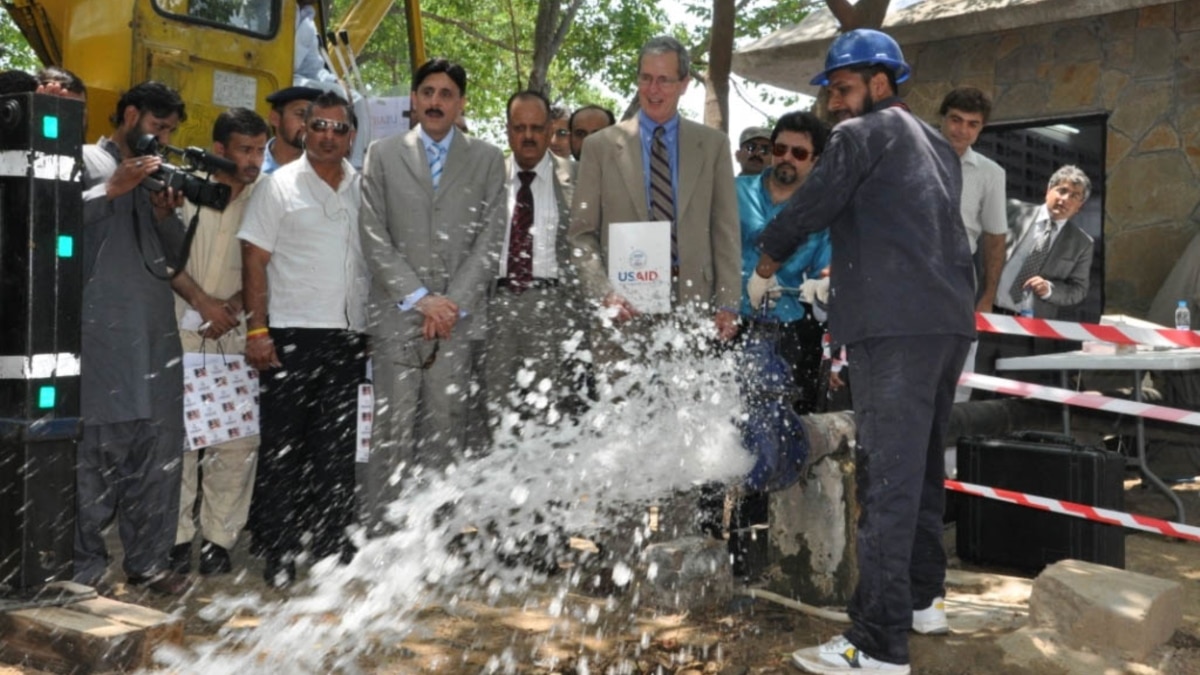The Importance of the Water for the World Act
The Importance of the Water for the World Act Voice of America


Tenth Anniversary of the Senator Paul Simon Water for the World Act

Introduction
This report highlights the tenth anniversary of the Senator Paul Simon Water for the World Act, a significant milestone in addressing the global water crisis and its implications. This act, named after Senator Paul Simon, aimed to increase access to water and sanitation for vulnerable communities worldwide. It aligns with the Sustainable Development Goals (SDGs) set by the United Nations.
Background
Senator Paul Simon, recognizing the severity of the global water crisis, advocated for increased efforts to address this issue. He led a successful campaign in the U.S. Congress, resulting in the passage of the Senator Paul Simon Water for the Poor Act in 2005. This act made access to safe water and sanitation a specific policy objective of U.S. foreign assistance programs.
Updates and Implementation
In 2014, the Water for the World Act was passed, building upon the previous act and incorporating evolving global Water, Sanitation, and Hygiene (WASH) programs. The implementation of this act was entrusted to the U.S. Agency for International Development (USAID).
Impact and Achievements
Since the enactment of the Water for the World Act, USAID has made significant progress in improving access to clean water and sanitation. Administrator Samantha Power stated that USAID has helped 42 million people access clean water and 38 million people access sanitation services.
Current Challenges
Despite these achievements, the global water crisis remains a pressing issue. Lack of access to water has led to numerous crises worldwide, with water scarcity being a trigger for almost 300 conflicts between 2010 and 2019. The United Nations predicts that close to 700 million people will be displaced or migrate due to water scarcity by the end of this decade.
Continued Efforts
As part of U.S. assistance on water and sanitation, USAID has been actively involved in providing access to drinking water services and sustainable sanitation. Since 2008, USAID has helped 70 million people gain access to drinking water services and nearly 55 million people with sustainable sanitation. Additionally, USAID has mobilized $590 million in new funding for the sanitation and water sectors since 2018.
Administrator Power emphasized the need for continued efforts, especially in light of increasing water shortages caused by extreme weather and rising temperatures. It is crucial to reaffirm the commitment to promoting global water security and ensuring that every person has the universal right to clean water, sanitation, and hygiene.
SDGs, Targets, and Indicators
| SDGs | Targets | Indicators |
|---|---|---|
| SDG 6: Clean Water and Sanitation | Target 6.1: By 2030, achieve universal and equitable access to safe and affordable drinking water for all | Indicator: Number of people with access to clean drinking water |
| Target 6.2: By 2030, achieve access to adequate and equitable sanitation and hygiene for all and end open defecation, paying special attention to the needs of women and girls and those in vulnerable situations | Indicator: Number of people with access to sanitation services | |
| SDG 16: Peace, Justice and Strong Institutions | Target 16.1: Significantly reduce all forms of violence and related death rates everywhere | No specific indicators mentioned in the article |
| SDG 13: Climate Action | Target 13.1: Strengthen resilience and adaptive capacity to climate-related hazards and natural disasters in all countries | No specific indicators mentioned in the article |
1. Which SDGs are addressed or connected to the issues highlighted in the article?
The SDGs that are addressed or connected to the issues highlighted in the article are SDG 6: Clean Water and Sanitation, SDG 16: Peace, Justice and Strong Institutions, and SDG 13: Climate Action.
2. What specific targets under those SDGs can be identified based on the article’s content?
Based on the article’s content, the specific targets that can be identified are:
- Target 6.1: By 2030, achieve universal and equitable access to safe and affordable drinking water for all
- Target 6.2: By 2030, achieve access to adequate and equitable sanitation and hygiene for all and end open defecation, paying special attention to the needs of women and girls and those in vulnerable situations
- Target 16.1: Significantly reduce all forms of violence and related death rates everywhere
- Target 13.1: Strengthen resilience and adaptive capacity to climate-related hazards and natural disasters in all countries
3. Are there any indicators mentioned or implied in the article that can be used to measure progress towards the identified targets?
Yes, there are indicators mentioned in the article that can be used to measure progress towards the identified targets:
- Indicator: Number of people with access to clean drinking water (related to Target 6.1)
- Indicator: Number of people with access to sanitation services (related to Target 6.2)
No specific indicators are mentioned in the article for Target 16.1 (related to SDG 16) and Target 13.1 (related to SDG 13).
4. SDGs, Targets, and Indicators
| SDGs | Targets | Indicators |
|---|---|---|
| SDG 6: Clean Water and Sanitation | Target 6.1: By 2030, achieve universal and equitable access to safe and affordable drinking water for all | Indicator: Number of people with access to clean drinking water |
| Target 6.2: By 2030, achieve access to adequate and equitable sanitation and hygiene for all and end open defecation, paying special attention to the needs of women and girls and those in vulnerable situations | Indicator: Number of people with access to sanitation services | |
| SDG 16: Peace, Justice and Strong Institutions | Target 16.1: Significantly reduce all forms of violence and related death rates everywhere | No specific indicators mentioned in the article |
| SDG 13: Climate Action | Target 13.1: Strengthen resilience and adaptive capacity to climate-related hazards and natural disasters in all countries | No specific indicators mentioned in the article |
Behold! This splendid article springs forth from the wellspring of knowledge, shaped by a wondrous proprietary AI technology that delved into a vast ocean of data, illuminating the path towards the Sustainable Development Goals. Remember that all rights are reserved by SDG Investors LLC, empowering us to champion progress together.
Source: editorials.voa.gov

Join us, as fellow seekers of change, on a transformative journey at https://sdgtalks.ai/welcome, where you can become a member and actively contribute to shaping a brighter future.







